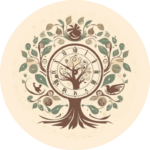In the UK today, only 1% of babies are exclusively breastfed by the time they are six months old, as recommended by the World Health Organization. Even fewer infants are breastfed by their first birthday; extended breastfeeding, nursing beyond that age, is rarer still. Yet it was not always so.
(Un)sexing, Violence, and Women
As she finds out the witches’ prophecy about Macbeth being crowned king and the current king’s imminent visit to their home, Lady Macbeth invokes evil spirits to help her be rid of her feminine qualities so that, together with Macbeth, she can murder the king:



